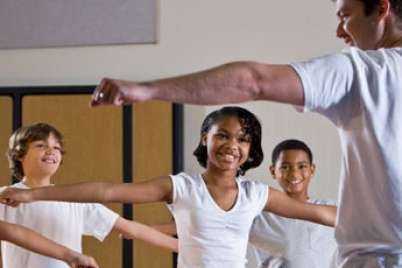
Multi-sport school festivals vs. single-sport tournaments
As educators, it’s important to ensure children are introduced to physical literacy. Providing a variety of movement opportunities in as many different environments as possible inspires children to be active now and hopefully for life.
In February, staff at École élémentaire publique Jeanne-Sauvé in Orleans, Ont. along with P.E. teachers from three other schools in the district, created the Multisport Winter Festival to serve this purpose.
We organized a four-school tournament, but instead of playing only one sport, students participated in a variety of activities such as skating, snowshoeing, and tobogganing.
Typically, a traditional tournament format involving four schools would only allow approximately 60 students to participate. Under this revised format, over 110 students were able to get involved in fun physical activity.
Variety is fun
The teachers organizing the festival wanted an event that would get as many students moving as possible in a fun, safe, and inclusive setting. It was a resounding success: Some participants chose to skate for hours, while others organized a soccer match in the snow. Regardless of the activity they chose, all participants were outside, moving and enjoying winter.
As the main organizer of this event, I didn’t have much set up to do. We already had the skating rink and a great toboggan hill in the city’s park. We chose participants from grades 4-6, with 10 students per grade. I gave priority to students who had not yet participated in a tournament.
Tracking success
As the school’s new full-time physical education teacher, I know the importance of making participation fun. My goal is to get every student to participate in at least one event before they graduate.
This year, I started tracking the extracurricular participation of all my grades 4-6 students. After four sporting events, 108 out of 172 students had participated. Also, 48 out of 61 grade 6 students participated—that’s a 79 percent participation rate for school board tournaments and events.
I asked the other 21 percent what would motivate them to take part. A few said they preferred intramurals because they didn’t like competition. Some said they were waiting for the track and field event. Others said they wished there was another sport available, such as badminton or parkour.
In Ottawa, most students get their competition fix through community sports. In light of this fact, I think it’s important for schools to adapt and focus on movement opportunities as opposed to winning banners. Competition and recreation can co-exist in elementary schools.
But let’s not fool ourselves, competitions have trumped recreational activities for quite some time now. Children who like traditional sports such as soccer, volleyball, and basketball already play these in the community.
It’s up to me as a physical-education teacher to give my students other opportunities. Organizing a multi-sport festival did just that.






I love that this has happened. It gives all children a chance to explore what is right for them, what encourages them through movement and to find a happy place in the world of PhysEd.
Keep developing opportunities for our youth to feel valued and worthwhile, so they may choose to keep finding activities that will move them both physically and mentally.